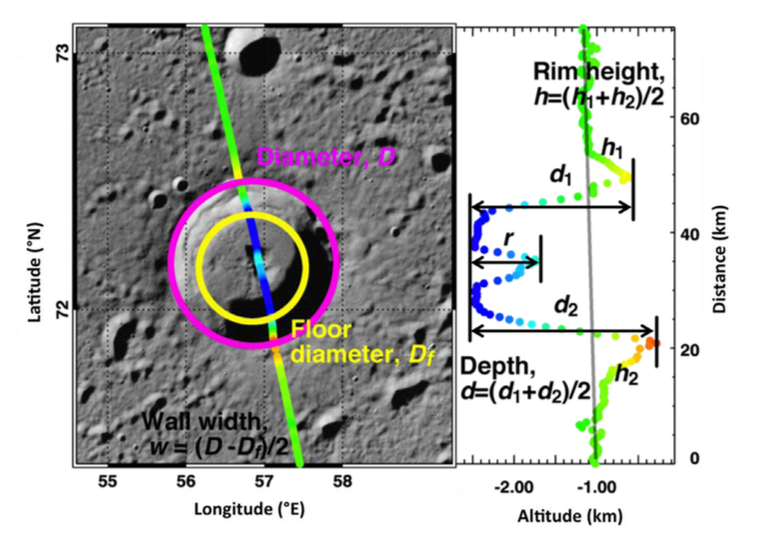
Impact cratering is a ubiquitous process in the solar system and occurs on the majority of planetary bodies visited by spacecraft. We are interested in how we can use the cratering process to probe the mechanical behavior of the crusts of terrestrial planets and the interior structure of small asteroids. We have worked on detailed measurements of the crater morphometry of Mercury using the Mercury Laser Altimeter (Susorney et al., 2016), finding surprising differences compared with the crater morphology of Mars (which has a similar gravitational acceleration as Mercury). This work has important implications for understanding the physical crustal properties of Mercury and Mars as well as the role of impact velocities of crater formation on the two planets. Motivated by these results, We have modeled the formation of impact craters using the CTH shock physics code to understand the impact of crustal physical properties on final crater morphology (Susorney et al., 2017b).

Surface roughness is a quantitative measure of the difference in topography over a given scale. It permits a quantitative investigation of the surface of planetary bodies at multiple scales and allows us to compare planetary bodies to each other. We have produced the first global surface roughness maps of an asteroid from altimetry data (Susorney and Barnouin, in review). We found that the topography of 433 Eros was controlled by the interplay of boulders and impact cratering and that surface roughness could identify the thickness of mobile regolith on 433 Eros. We have extended this research to a study of Itokawa, where we have found large longitudinal variations that could help explain the mismatch between observed and expected YORP rotational acceleration. In addition, we are finding evidence that surface roughness may provide a means of understanding the interior structure of asteroids with topographic data alone. We plan to continue this research on Bennu where we will have topography at a horizontal scale of 7-cm, an order of magnitude higher than previous studies. We are particularly excited for the 7-cm data as we are approaching the scale that radar and thermophysical modelers measure surface roughness and we hope to use the Bennu dataset to connect earth-based observations to in-situ measurements of an asteroid.

We have also investigated the surface roughness of Mercury to understand how topography at different scales is affected by the different geologic processes that act on Mercury's surface. In Susorney et al (2017a) we found that the surface roughness (a scale-dependent measure of variations in topography) of Mercury can be used to identify regions of the surface dominated by different geologic processes (impact cratering versus tectonism) and could even distinguish quantitatively different tectonic regimes (compressive versus extensional). We followed that study up with a detailed investigation of the role of impact craters on Mercury in producing surface roughness, finding that the majority of the topography under 10 km in scale can be associated with cratering, particularly the large ejecta fields on Mercury (Susorney et al., 2018). We have extended my use of surface roughness to produce the first global surface roughness maps of an asteroid from altimetry data (Susorney and Barnouin, in review). We found that the topography of 433 Eros was controlled by the interplay of boulders and impact cratering and that surface roughness could identify the thickness of mobile regolith on 433 Eros.

One of the surprising discoveries on our innermost planet is the presence of volatiles (likely water ice) at the poles. Using the Mercury Laser we have measured the thickness of such deposits to be on the order of tens of meters. This has permitted us to make a total volume estimate of the deposits at Mercury's poles which is important in understanding the source and origin of volatiles in the inner solar system.